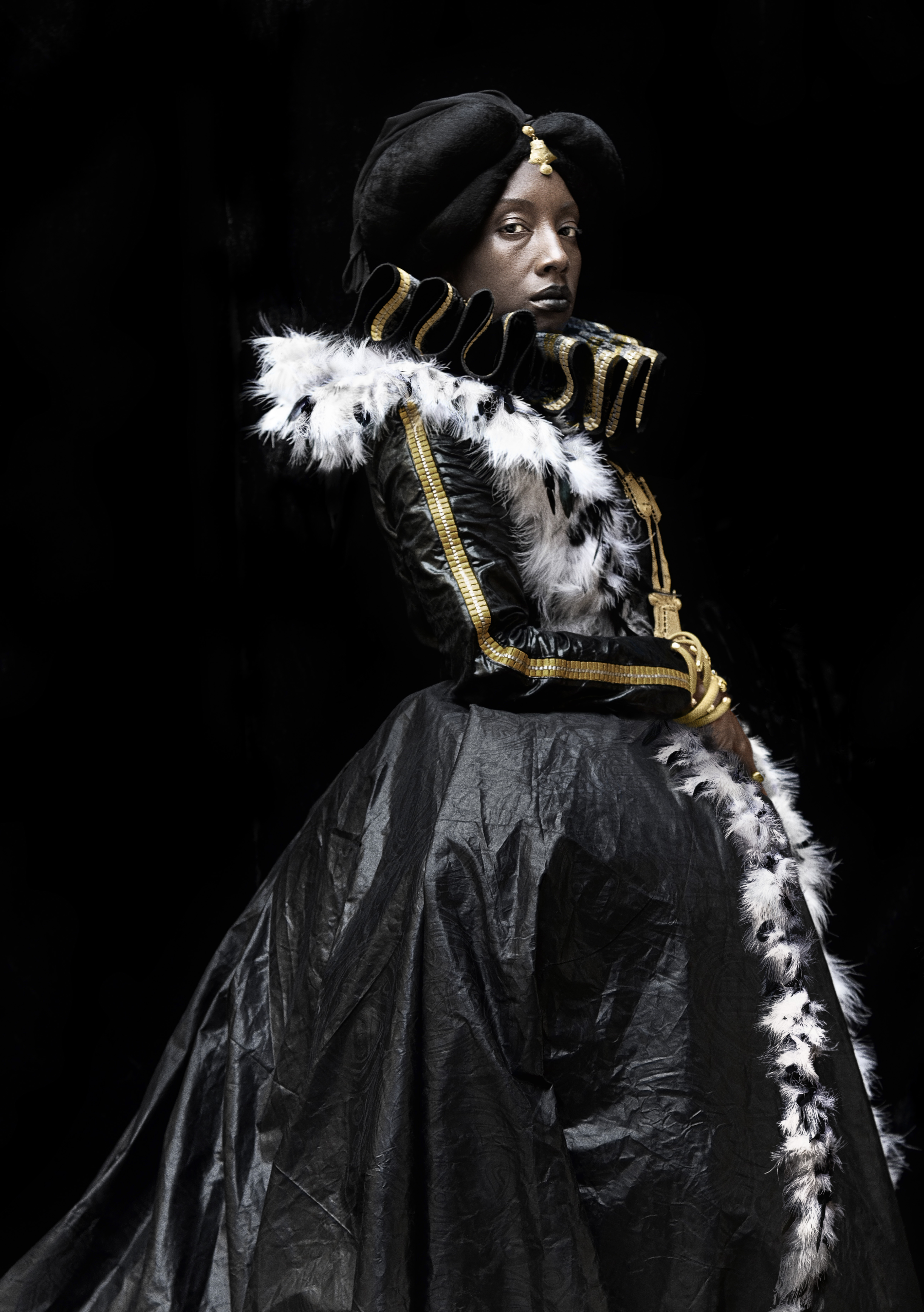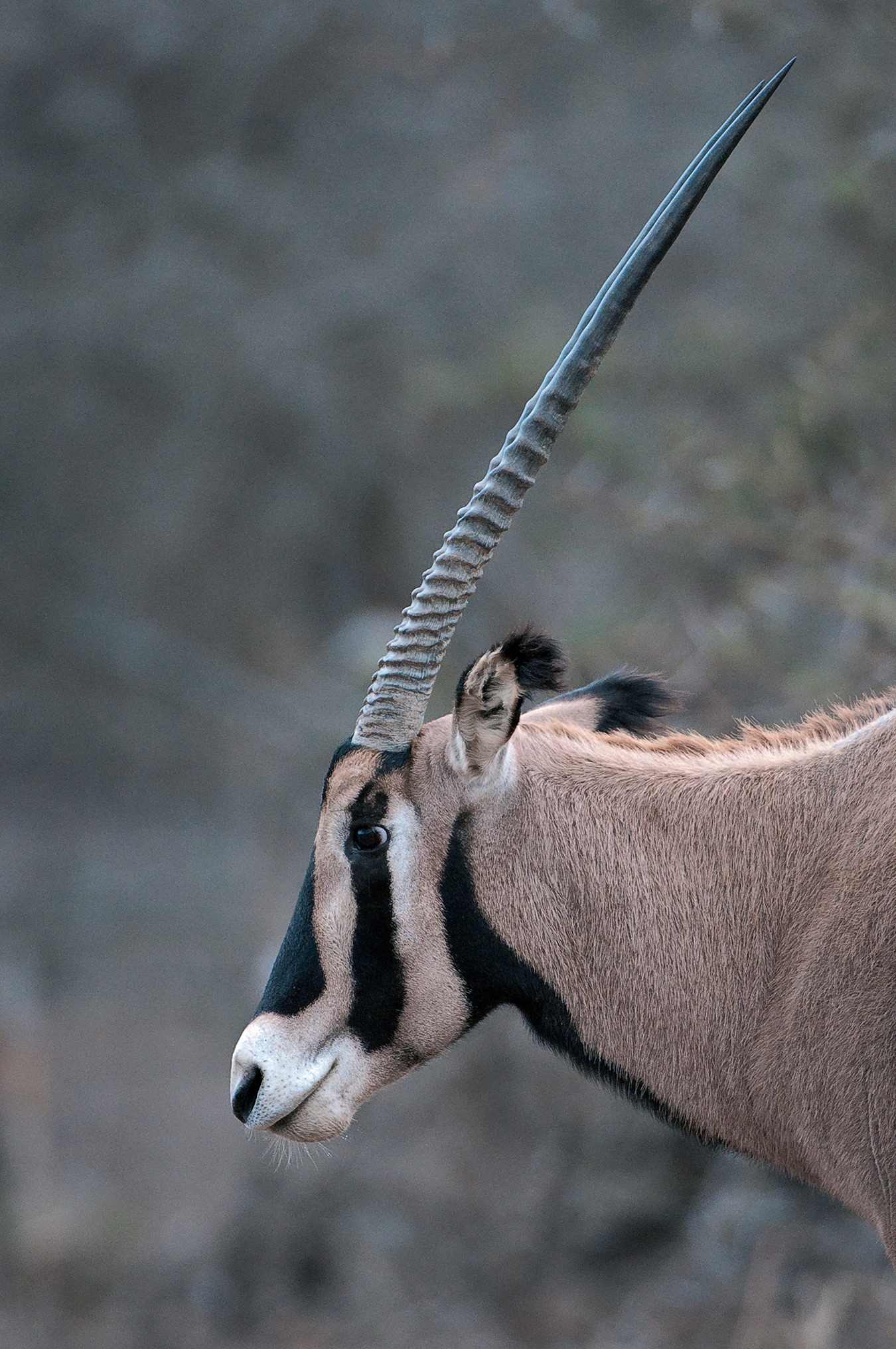-

Photo courtesy of Time + Tide.
-
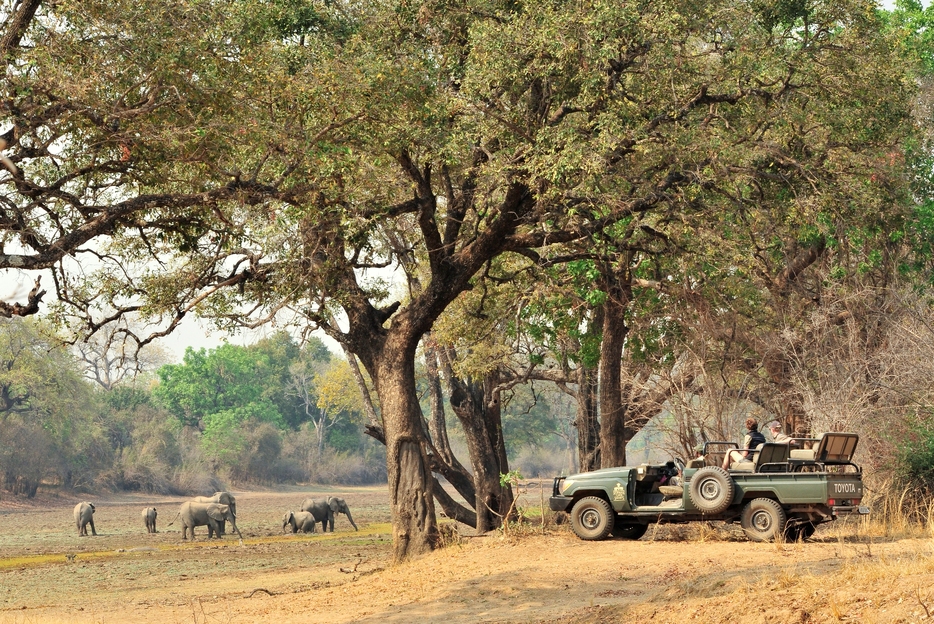
Photo courtesy of Time + Tide.
-

Photo by Will Burrard-Lucas for Time + Tide.
-

Photo by Will Burrard-Lucas for Time + Tide.
-

Spacious Chinzombo villas have air-conditioning above the beds and private plunge pools outside. Photo courtesy of Time + Tide.
-
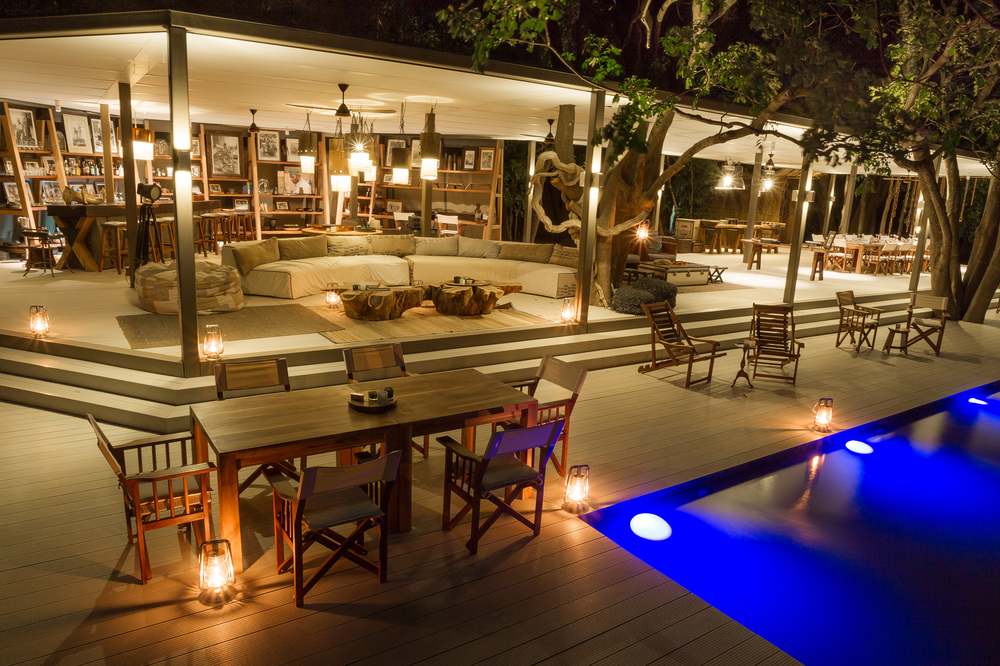
Vintage photos of Norman Carr decorate Chinzombo’s restaurant and lounge, which has a river-view pool. Photo courtesy of Time + Tide.
-
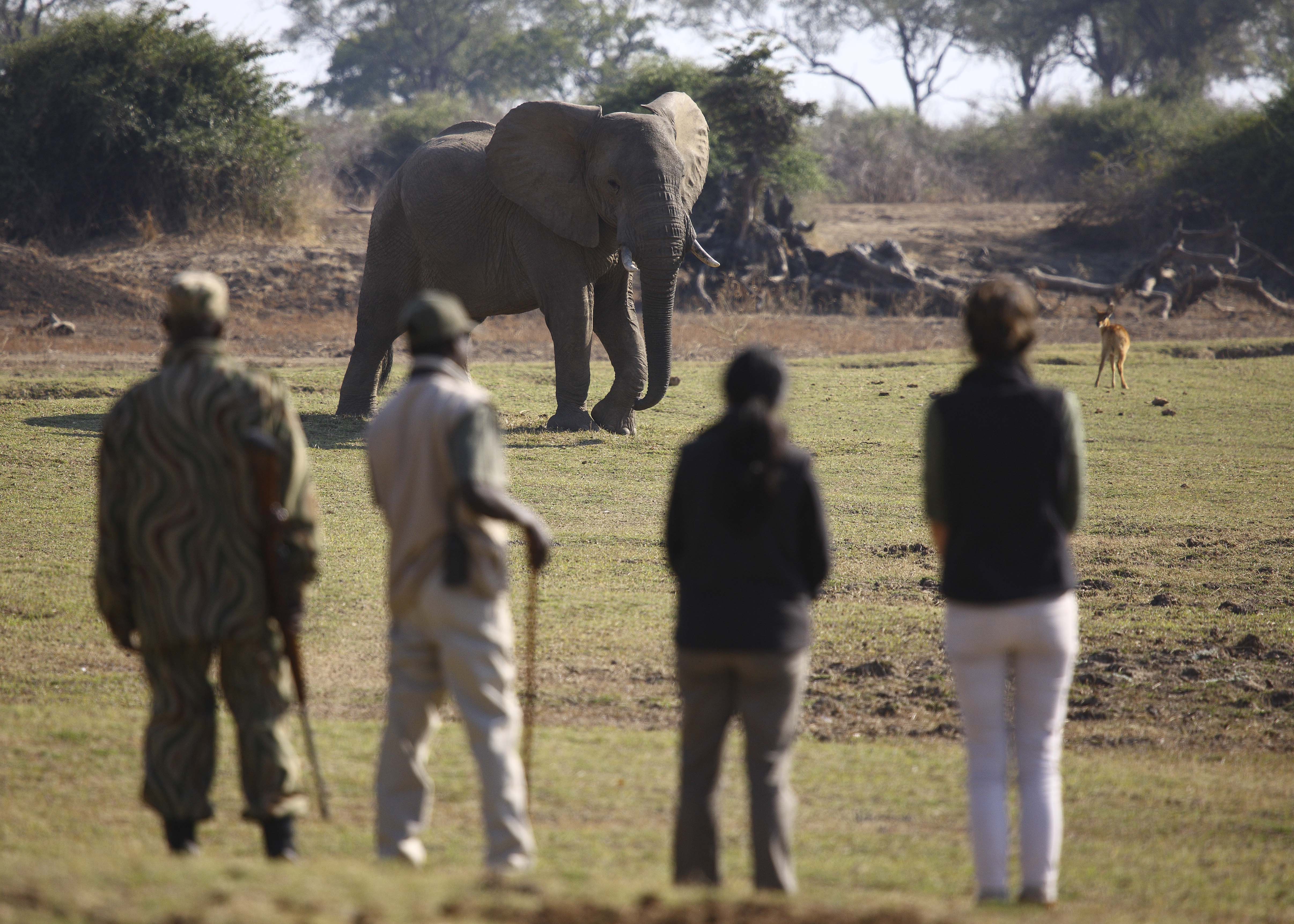
Photo courtesy of Time + Tide.
-
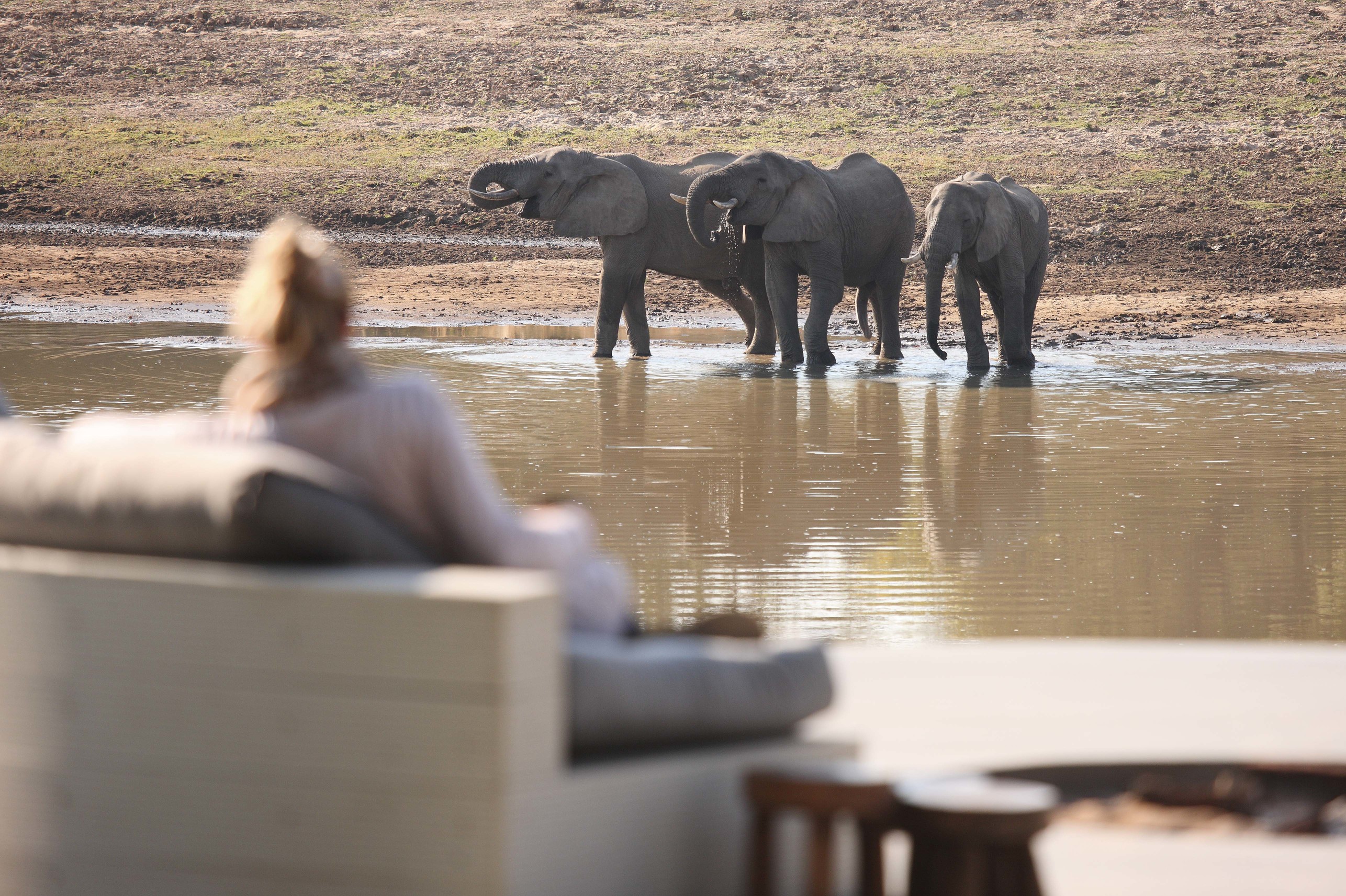
At Chinzombo, you can watch elephants and hippos right from your tented villa and the restaurant/lounge. Photo courtesy of Time + Tide.
-
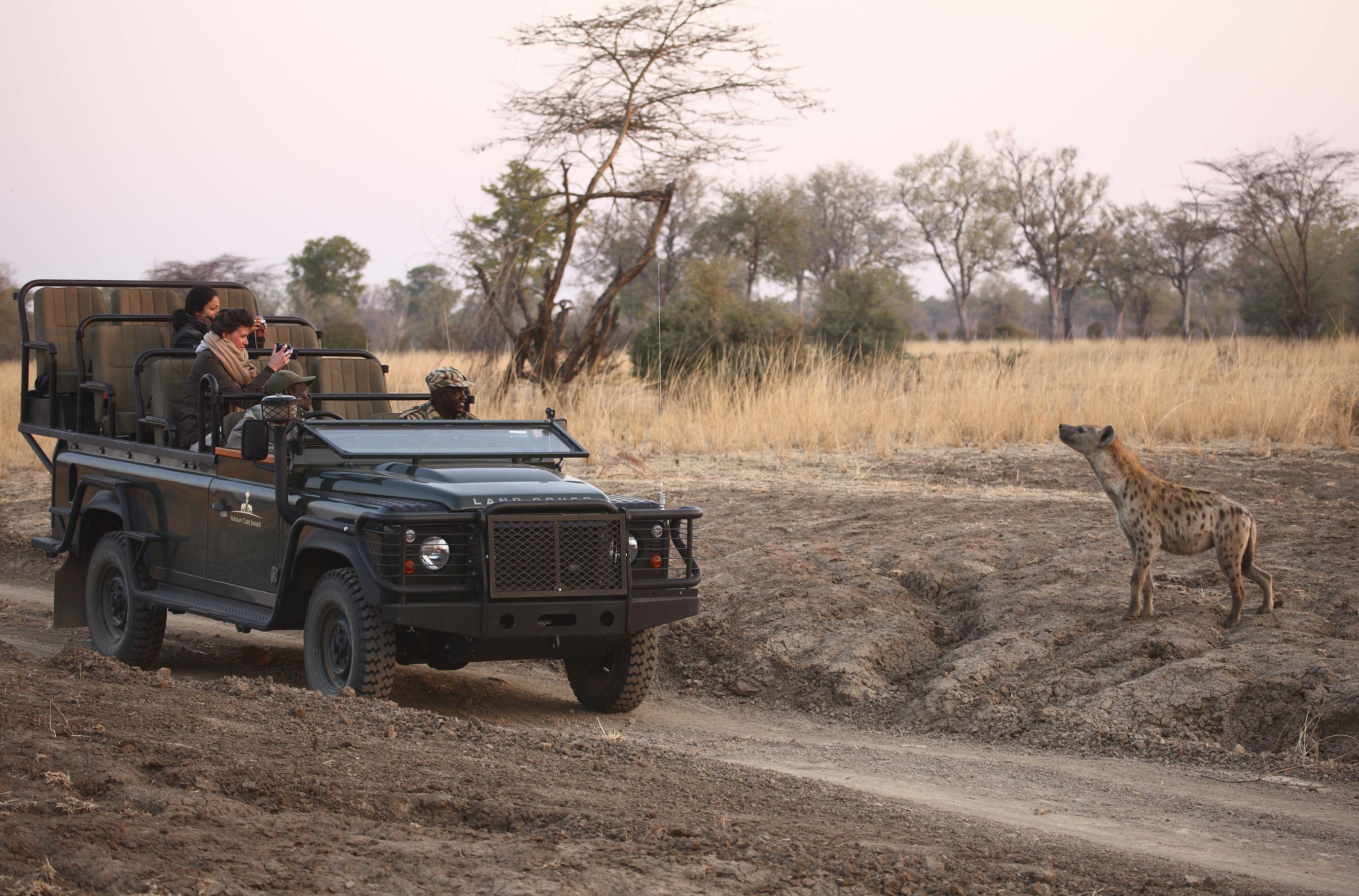
Photo courtesy of Time + Tide.
Walking Safaris in Zambia
Walk on the wild side with Norman Carr Safaris.
We walk single file in the African bush, our ranger in camouflage fatigues leading the way, a high-powered rifle slung over his shoulder. A herd of cappuccino-coloured impala stops; ears perked up, they suddenly dart away, gracefully leaping over tree stumps and bushes like ballet dancers. But we’re more interested in the white-backed vultures stirring up dust clouds in the distance above the rib bones of a large carcass. A hyena skulks off as we approach. The carcass turns out to be that of an elephant—its wrinkly legs are still intact. Our guide points out the lion tracks. “A lot of animals have been feasting on this,” he reflects. “They’ll be back again tonight.”
We’re on a morning walking safari in Zambia’s South Luangwa National Park. Here, walks are synonymous with Norman Carr Safaris, the country’s oldest safari company. Back in the days when safari meant a hunting experience, Norman Carr pioneered the idea of taking visitors to photograph the animals rather than shoot them. He encouraged a tribal chief to set aside a portion of land as a game reserve and established the first South Luangwa safari camp in 1950. Over the years, he built a handful of other camps and started his famous walking safaris to promote conservation-based tourism in the area.
Now the company has five different camps in South Luangwa and a new one (King Lewanika Lodge opened May 2017) in Zambia’s untouched Liuwa Plain wilderness. Guided walks are offered at each. In South Luangwa, you can even walk from camp to camp on a multi-day circuit—arriving at each destination in time for brunch or lunch, your bags waiting in your tent or chalet—as the camps are located three to five hours’ walking distance apart. Our morning walk is less strenuous. But we still welcome the moment our guide lays out a tablecloth under a shady mopane tree and opens a Thermos of steaming tea for our mid-morning break.
I’m a city girl used to my creature comforts, so of the three camps we stay at in South Luangwa, I like Chinzombo best. While Norman Carr’s other bush camps are solar-powered and off-the-grid, Chinzombo has electricity and Wi-Fi. It’s the newest in the park—and the epitome of African safari chic.
Back in the days when safari meant a hunting experience, Norman Carr pioneered the idea of taking visitors to photograph the animals rather than shoot them.
Six tent-style villas—each with a private pool—stretch along the edge of the Luangwa River. From our king-size bed, we look out through rolled-up canvas walls at baboons scampering across a grassy lawn. Hippos laze in the water beyond (coming out at night to graze and grunt noisily outside our villa). In the mid-day heat, an innovative eco-friendly air conditioner cools the air above our bed.
We lack for nothing in our “villa.” There’s a freestanding white stone tub in the bathroom, umbrellas (in case it rains), bathrobes and slippers, and a basket with a note reminding us that laundry (sun-dried) is complimentary. I even discover a hairdryer, usually unheard of on safari. But while all conceivable hotel luxuries are at hand, Chinzombo retains the wilderness aesthetic—hanging leather pouches store toiletries and beaten brown metal trunks serve as bedside tables. The complimentary mini-bar fridge is even “clothed” in grey canvas.
For “Big Five” viewing, we clamber into a flat-bottom aluminum boat and cross the river to go on game drives—the most popular way to see African wildlife today. Despite the engine noise, the animals behave differently when approached in an open Land Rover. On a walk, we’re upright two-legged creatures, perceived as predators, and they flee long before we get near. But they’re habituated to the sight and sound of people seated in an open game-viewing vehicle, allowing us to see them up close.
At Chinzombo, we watch three lions scanning the wide river from the riverbank, along with huge Nile crocodiles gliding slowly back and forth in the water. We see yellow-billed storks fishing in streams, troupes of green vervet monkeys grooming each other, waddling warthogs, giraffes, trumpeting elephants, and a dazzle of zebras (how perfect is “dazzle” as a collective noun?). We miss the actual moment a hunting leopard takes down a puku antelope—but watch transfixed as it tears into the soft groin of its prey.
Still, it’s the walks that induce the most thrills. We’re not out to see big game. The aim is to learn about the smaller things—insects, plants, dung, tracks—and how all life in the bush is inter-related. But we are vulnerable here. Danger awaits should we happen to stumble upon any number of creatures—an elephant in musth, an ornery lone Cape buffalo bull, a dreaded viper. On foot, our senses are heightened, our internal antennae on high alert every step. The experience is raw, and we’re keenly aware of nature’s wondrous cycle of life and death and rebirth in the bush. And isn’t that what an African safari is really about?
_________
Never miss a story, sign up for NUVO’s weekly newsletter, here.





